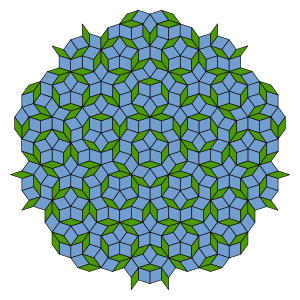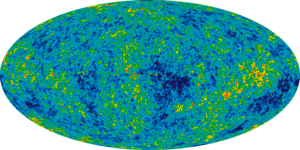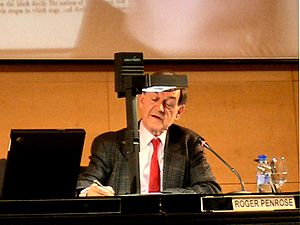Roger Penrose facts for kids
Quick facts for kids
Roger Penrose
|
|
|---|---|
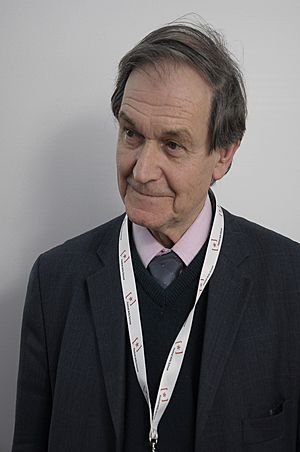
Penrose in 2011
|
|
| Born | 8 August 1931 Colchester, Essex, England
|
| Education | |
| Known for |
List of contributions
Moore–Penrose inverse
Twistor theory Spin network Abstract index notation Black hole bomb Geometry of spacetime Cosmic censorship Illumination problem Weyl curvature hypothesis Penrose inequalities Penrose interpretation of quantum mechanics Diósi–Penrose model Newman–Penrose formalism GHP formalism Penrose diagram Penrose inequality Penrose process Penrose tiling Penrose triangle Penrose stairs Penrose–Hawking singularity theorems Penrose graphical notation Penrose transform Penrose–Terrell effect pp-wave spacetime Schrödinger–Newton equations Orch-OR/Penrose–Lucas argument FELIX experiment Trapped surface Andromeda paradox Conformal cyclic cosmology |
| Spouse(s) |
Joan Isabel Wedge
(m. 1959, divorced)Vanessa Thomas
(m. 1988) |
| Children | 4 |
| Parent(s) |
|
| Relatives | Roland Penrose (uncle), Jonathan Penrose (brother), Oliver Penrose (brother), Shirley Hodgson (sister), Antony Penrose (cousin) |
| Awards |
List of awards
Adams Prize (1966)
Heineman Prize (1971) Fellow of the Royal Society (1972) Eddington Medal (1975) Royal Medal (1985) Wolf Prize (1988) Dirac Medal (IOP) (1989) Albert Einstein Medal (1990) Naylor Prize and Lectureship (1991) Knight Bachelor (1994) James Scott Prize Lectureship (1997–2000) Karl Schwarzschild Medal (2000) De Morgan Medal (2004) Dalton Medal (2005) Copley Medal (2008) Fonseca Prize (2011) Nobel Prize in Physics (2020) |
| Scientific career | |
| Fields | Mathematical physics, tessellations |
| Institutions | |
| Thesis | Tensor Methods in Algebraic Geometry (1957) |
| Doctoral advisor | John A. Todd |
| Other academic advisors | W. V. D. Hodge |
| Doctoral students |
|
Sir Roger Penrose (born 8 August 1931) is a famous English mathematician and physicist. He is known for his important work on general relativity and cosmology, which is the study of the universe. He won the Nobel Prize in Physics in 2020 for his discoveries about black holes.
Penrose is a professor at the University of Oxford. He has written several popular books, including The Emperor's New Mind and The Road to Reality, which explain his ideas about physics and the universe.
Contents
Early Life and Learning
Roger Penrose was born in Colchester, England. His father, Lionel Penrose, was a doctor who studied genetics. His mother, Margaret, was also a doctor. Roger comes from a family of talented people, including artists and chess players.
During World War II, Roger lived in Canada with his family. He later studied at University College London, where he earned a degree in mathematics in 1952.
In 1957, he received his PhD in algebraic geometry from St John's College, Cambridge. While studying, he helped bring back an important mathematical idea called the Moore–Penrose inverse.
The Penrose Triangle
In the 1950s, Roger Penrose worked with his father to create the Penrose triangle. This is an "impossible object" that looks like a solid 3D triangle but can't exist in real life. It's a cool optical illusion!
Their work inspired the famous artist M. C. Escher, who then created his own amazing artworks like Waterfall and Ascending and Descending, which show impossible scenes.
Discoveries and Career
Roger Penrose has held many teaching and research positions at universities around the world, including Princeton University and King's College, London.
Understanding Spacetime
In 1964, Penrose made a huge breakthrough in how we understand spacetime. Spacetime is the four-dimensional fabric of the universe that combines space and time. Before Penrose, scientists could only study spacetime in very simple situations.
Penrose found a new way to look at spacetime by focusing on its shape and how light travels through it. This helped scientists understand what happens when a star collapses. He showed that if a star shrinks beyond a certain point, its gravity becomes so strong that it forms a singularity.
Black Holes and Cosmic Censorship
Penrose's work was key to understanding black holes. He suggested that these singularities would always be hidden inside an "event horizon." An event horizon is like a one-way boundary around a black hole. Nothing, not even light, can escape from inside it. This idea is called the cosmic censorship hypothesis.
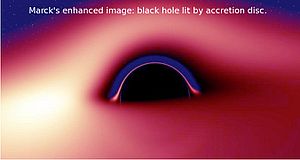
He also described the Penrose process, which explains how energy might be taken out of a black hole. His ideas helped explain powerful events in space, like quasars.
Penrose Tilings
In 1974, Penrose discovered Penrose tilings. These are special patterns made from just two types of tiles that can cover a flat surface without repeating. They have a unique five-fold symmetry.
Years later, in 1984, scientists found that atoms in quasicrystals (a new type of material) arrange themselves in patterns similar to Penrose tilings.
Twistor Theory and Spin Networks
Penrose also invented twistor theory in 1967, which is a mathematical way to describe objects in spacetime. In 1971, he came up with spin networks, which are used in a theory called loop quantum gravity to describe the geometry of spacetime at a very tiny level. He also helped make Penrose diagrams popular, which are special diagrams used to visualize spacetime.
The Universe's Beginnings
In 2010, Penrose suggested that there might have been a universe before our own. He found possible evidence for this in data from the Wilkinson Microwave Anisotropy Probe, which studies the cosmic microwave background radiation (leftover heat from the Big Bang).
He believes that the Big Bang might have been a smooth transition from a previous universe. This idea is part of his conformal cyclic cosmology (CCC) theory. In this theory, the universe goes through endless cycles, with each cycle ending when black holes evaporate and everything becomes photons, which then start a new Big Bang.
Consciousness and Physics
Penrose has written books exploring the link between physics and human consciousness. In The Emperor's New Mind (1989), he argues that our current understanding of physics isn't enough to explain consciousness. He thinks that consciousness might involve special quantum processes in the brain.
He believes that computers, as we know them today, cannot truly be intelligent because they follow fixed rules (algorithms). He argues that human thought, especially mathematical insight, goes beyond simple algorithms. This idea has led to many discussions among scientists and philosophers.
Penrose continued to explore these ideas in his books Shadows of the Mind (1994) and The Large, the Small and the Human Mind (1997). He also worked with anesthesiologist Stuart Hameroff on the Orch-OR theory, which suggests that consciousness comes from quantum effects in tiny structures called microtubules inside brain cells.
Publications
Roger Penrose has written many books for both scientists and the general public.
Popular Books
- The Emperor's New Mind: Concerning Computers, Minds, and The Laws of Physics (1989)
- Shadows of the Mind: A Search for the Missing Science of Consciousness (1994)
- The Road to Reality: A Complete Guide to the Laws of the Universe (2004)
- Cycles of Time: An Extraordinary New View of the Universe (2010)
- Fashion, Faith, and Fantasy in the New Physics of the Universe (2016)
Co-Authored Books
- The Nature of Space and Time (with Stephen Hawking) (1996)
- The Large, the Small and the Human Mind (with Abner Shimony, Nancy Cartwright, and Stephen Hawking) (1997)
Awards and Honors
Roger Penrose has received many awards for his important contributions to science.
- In 1972, he became a Fellow of the Royal Society, a very respected scientific organization.
- In 1988, he shared the Wolf Prize in Physics with Stephen Hawking for their work on singularities in spacetime.
- In 1994, he was knighted by the Queen for his services to science, earning him the title "Sir."
- In 2000, he was made a Member of the Order of Merit, a special honor given by the British monarch.
- In 2008, he received the Copley Medal, the Royal Society's oldest and most prestigious award.
- In 2020, he was awarded one half of the Nobel Prize in Physics. He received it for showing that black holes are a strong prediction of Albert Einstein's theory of general relativity. The other half of the prize went to Reinhard Genzel and Andrea Ghez for discovering a supermassive black hole at the center of our galaxy.
Personal Life
Roger Penrose has four children. He was first married to Joan Isabel Penrose, and later married Vanessa Thomas.
Views on Religion
Penrose has said that he is not a believer in established religions and considers himself an agnostic. However, he believes that the universe has a purpose and is not just here by chance.
See also
 In Spanish: Roger Penrose para niños
In Spanish: Roger Penrose para niños



